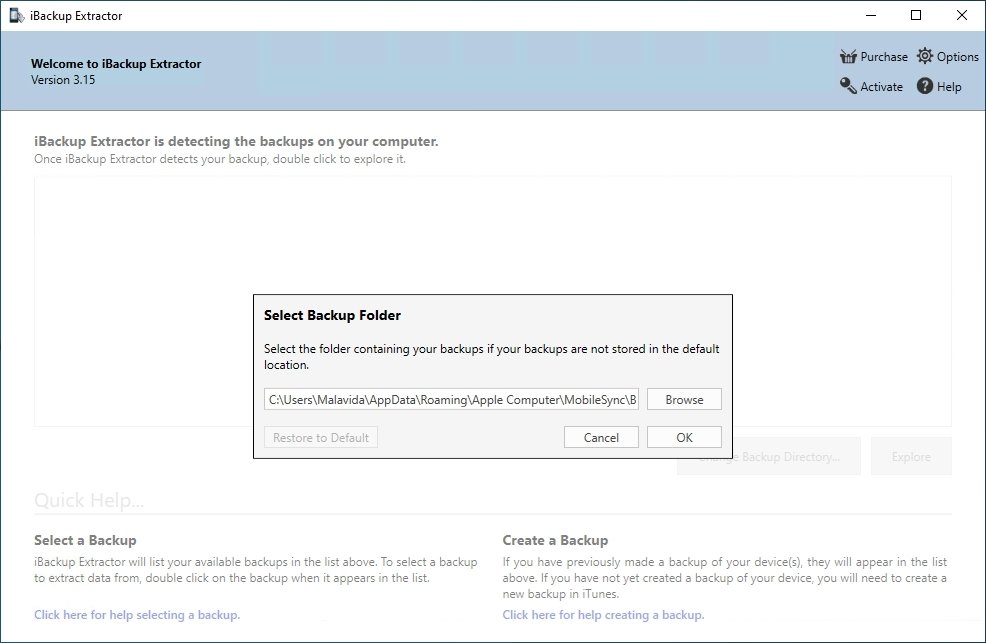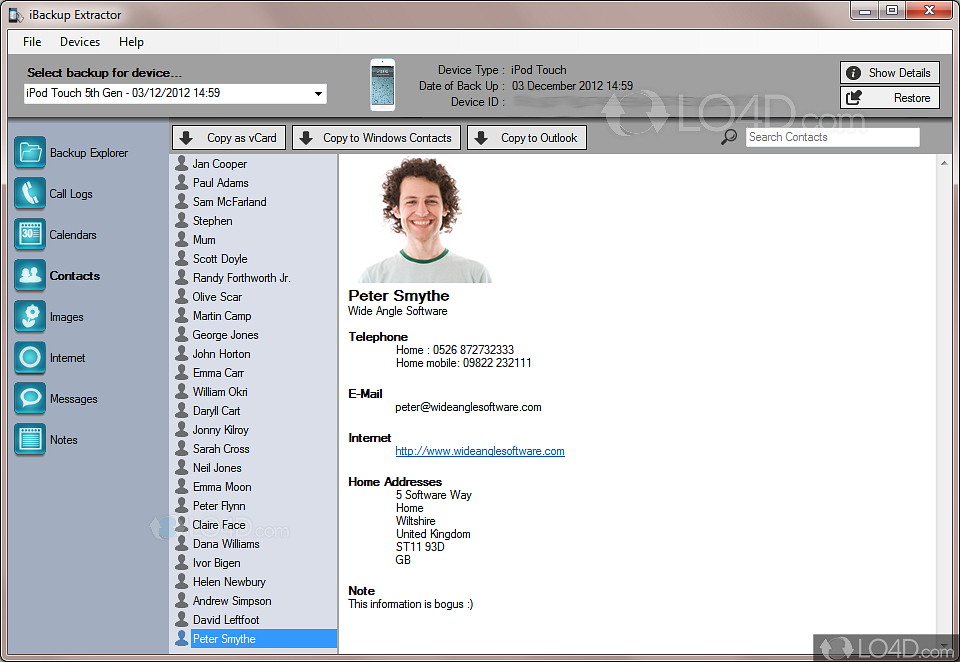

Be careful though, since a backup restore will overwrite all current data on the device.Īpart from the fact that you can restore backups, you can also create new ones. Select the backup you want to restore, connect your device if you haven’t done so, and then follow a couple of easy steps to begin the restoration process. Restoring a backup is a straightforward operation. If you want to browse through all of the devices contents simply click on the Backup Explorer option. After you pick the desired one you can see its contents divided into several categories: Calendars, Call Logs, Contacts, Images, Internet, Messages and Notes. On the main area there is a drop down menu which lists all available backups iTunes has created and stores in your computer. The program’s main interface has a toolbar at the top, from where you can access all of the program’s functions. The iOS device must be of version 4.2 or above. Supported operating systems are Windows XP, Vista, 7, 8 (32/64 bit) and Mac OS X.

The same goes for any additional 3 rd party software. No viruses, spyware or other types of malware are included in the setup package. All you have to do is run the install and follow a series of steps (which don’t contain any advanced settings at all) until you reach the main installation step, where you’ll just have to wait a few moments until it’s complete. There is nothing difficult in this installation. iBackup Extractor is a software designed by Wide Angle Software that can retrieve the contents of an iOS device by using backups that iTunes creates when syncing the device. Do you ever fear that your iPhone will get stolen or broken? Well that’s obviously a yes, but unfortunately if this happens then chances are you won’t be able to restore it (unless you have a way of tracking the thief down and recovering it) however you will still be able to recover its contents.


 0 kommentar(er)
0 kommentar(er)
